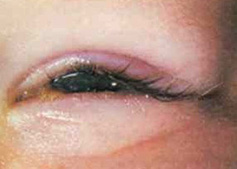PDF 76 KB
Conjunctivitis is an inflammation of the lining of the eye and eyelid caused by bacteria, viruses, chemicals or allergies fact sheet
Conjunctivitis, sometimes known as ‘sticky eye’, is an inflammation of the lining of the eye and eyelid caused by bacteria, viruses, chemicals or allergies.
Viral and bacterial conjunctivitis can be spread by direct contact with eye secretions or indirectly by contact with towels, washcloths, handkerchiefs and other objects contaminated by contact with eye secretions. In some cases, it can be spread by insects such as flies. Conjunctivitis caused by chemicals or allergies is not infectious.
 Symptoms may include:
Symptoms may include:
Diagnosis is usually made following examination of the eye by a doctor. Sometimes the doctor will take a swab from the infected eye to send to the laboratory as it is usually not possible to tell whether the conjunctivitis is caused by bacteria or viruses without laboratory tests.
(time between becoming infected and developing symptoms)
Usually 24 to 72 hours.
(time during which an infected person can infect others)
While the eye discharge is present.
Antibiotic eye drops or ointment may be prescribed by a doctor.
Since bacterial and viral infections look the same, a person with symptoms of conjunctivitis should always be seen by a doctor for examination, diagnosis and treatment.